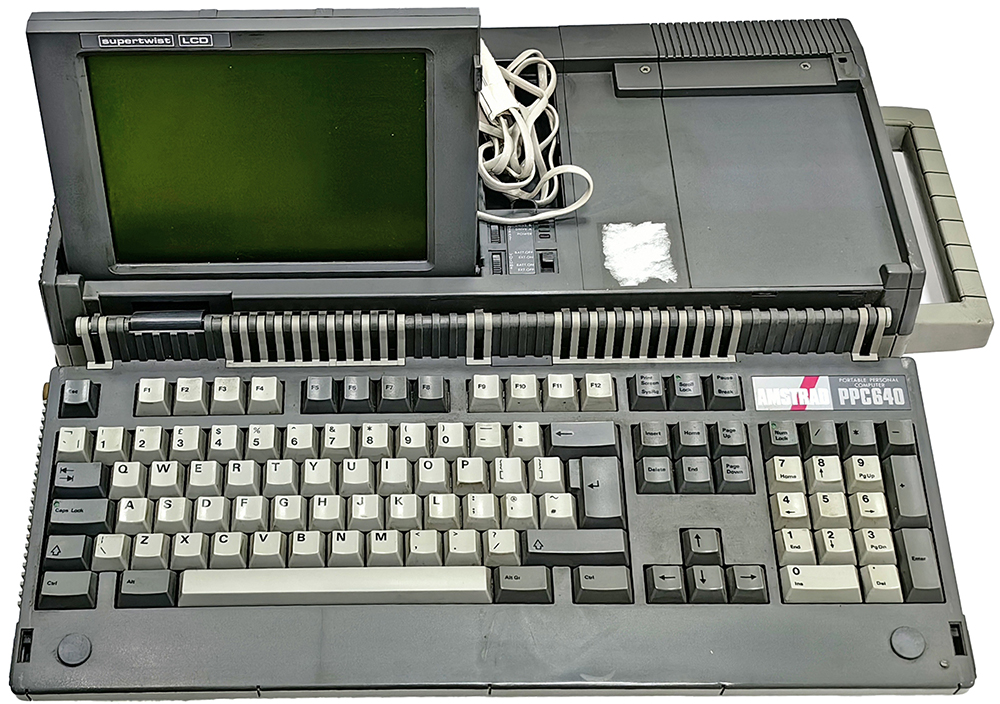The Amstrad PPC640, introduced in 1988 by the British company Amstrad, was one of the first affordable portable IBM PC-compatible computers. It succeeded the Amstrad PPC512, which had been released a year earlier, in 1987, marking the company’s first step into the realm of mobile computing. Aimed at business users and entrepreneurs, the PPC640 was designed as a portable alternative to the bulky desktop computers of the time, allowing users to work on the go with full DOS compatibility. The computer featured a monochrome LCD screen with a resolution of 640×200 pixels, dual 3.5-inch floppy disk drives, and a built-in 300/1200 bps modem, enabling users to connect to the popular Bulletin Board Systems (BBS) and send faxes. It could be powered from a wall outlet, a car cigarette lighter, or ten C-cell batteries, making it truly portable—despite its weight of approximately 5.4 kilograms. The PPC640 supported software such as WordPerfect and Lotus 1-2-3, allowing for word processing, spreadsheet management, and basic communication functions. Its price was significantly lower than that of competing laptops at the time, making mobile computing accessible to a broader audience for the first time. Thanks to its role in expanding access to portable technology, the Amstrad PPC640 represents an important milestone in the evolution of mobile computing. It helped bridge the gap between static office setups and a more mobile, flexible way of working—paving the way for modern laptop computers.
Creator: Amstrad, 1987
Source: Gift of Vanja Korać
Text prepared by Vanja Korać
Photo by Dragan Aćimović
